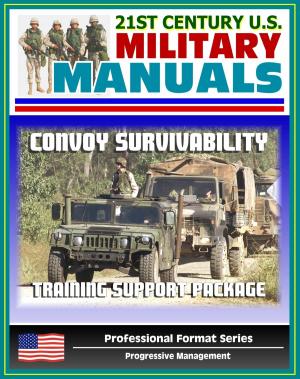American Military Strategy During the Moro Insurrection in the Philippines 1903 - 1913: Leonard Wood, Tasker Bliss, John J. Pershing, Philippine Revolutionary Government (PRG), Philippine Constabulary
Nonfiction, History, Military, United States, Social & Cultural Studies, Political Science| Author: | Progressive Management | ISBN: | 9781311990792 |
| Publisher: | Progressive Management | Publication: | June 29, 2016 |
| Imprint: | Smashwords Edition | Language: | English |
| Author: | Progressive Management |
| ISBN: | 9781311990792 |
| Publisher: | Progressive Management |
| Publication: | June 29, 2016 |
| Imprint: | Smashwords Edition |
| Language: | English |
This excellent report has been professionally converted for accurate flowing-text e-book format reproduction. This thesis explores the strategy followed by the American military government in overcoming Moro resistance in the Philippines from 1903-1913. A chapter is devoted to the period of each of the three Military Governors of Moro Province, Generals Leonard Wood, Tasker Bliss and John Pershing. The military governors primarily focused on first establishing a system of governance, followed by economic development and educational initiatives as a means of pacifying and controlling the Moros. Military operations were only intended to play a supporting role in the American strategy to pacify the Moros. However, security threats and violent opposition constantly hindered that strategy so that pacification and acquiescence to American rule could not be established. Ultimately, it was Pershing's decision to focus on security through his disarmament policy and the subsequent campaigns to enforce that policy that finally established conditions for the transition of governance to civilian control and end military government within the province. Though initially conceived of as a supporting effort to a broader whole of government approach, in the end military operations became the decisive means for ending Moro resistance to American authority.
CHAPTER 1 - INTRODUCTION * Background * Primary Research Question * Secondary Research Questions * Limitations * Literature Review * Primary Sources * Secondary Sources * CHAPTER 2 - THE LEONARD WOOD YEARS, 1903-1906 * Introduction * Government Organization * Legal System * Taxation * Education * Infrastructure * Economy * Security Operations * Constabulary Operations * Military Operations * Conclusion * CHAPTER 3 - THE TASKER BLISS YEARS, 1906-1909 * Introduction * Economy * Infrastructure * Education * Government * Security * Conclusion * CHAPTER 4 - THE JOHN J. PERSHING YEARS, 1909-1913 * Introduction * Education * Economy * Infrastructure * Government * Security * Conclusion * CHAPTER 5 - CONCLUSION
This excellent report has been professionally converted for accurate flowing-text e-book format reproduction. This thesis explores the strategy followed by the American military government in overcoming Moro resistance in the Philippines from 1903-1913. A chapter is devoted to the period of each of the three Military Governors of Moro Province, Generals Leonard Wood, Tasker Bliss and John Pershing. The military governors primarily focused on first establishing a system of governance, followed by economic development and educational initiatives as a means of pacifying and controlling the Moros. Military operations were only intended to play a supporting role in the American strategy to pacify the Moros. However, security threats and violent opposition constantly hindered that strategy so that pacification and acquiescence to American rule could not be established. Ultimately, it was Pershing's decision to focus on security through his disarmament policy and the subsequent campaigns to enforce that policy that finally established conditions for the transition of governance to civilian control and end military government within the province. Though initially conceived of as a supporting effort to a broader whole of government approach, in the end military operations became the decisive means for ending Moro resistance to American authority.
CHAPTER 1 - INTRODUCTION * Background * Primary Research Question * Secondary Research Questions * Limitations * Literature Review * Primary Sources * Secondary Sources * CHAPTER 2 - THE LEONARD WOOD YEARS, 1903-1906 * Introduction * Government Organization * Legal System * Taxation * Education * Infrastructure * Economy * Security Operations * Constabulary Operations * Military Operations * Conclusion * CHAPTER 3 - THE TASKER BLISS YEARS, 1906-1909 * Introduction * Economy * Infrastructure * Education * Government * Security * Conclusion * CHAPTER 4 - THE JOHN J. PERSHING YEARS, 1909-1913 * Introduction * Education * Economy * Infrastructure * Government * Security * Conclusion * CHAPTER 5 - CONCLUSION















